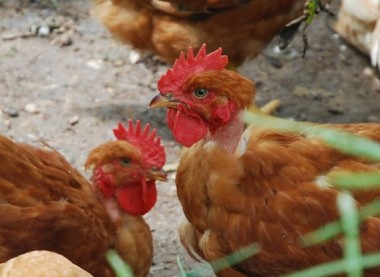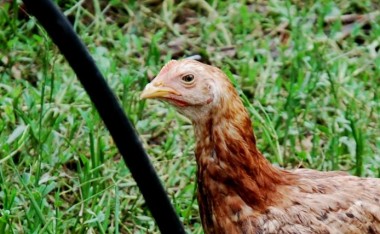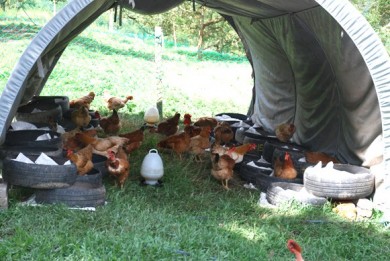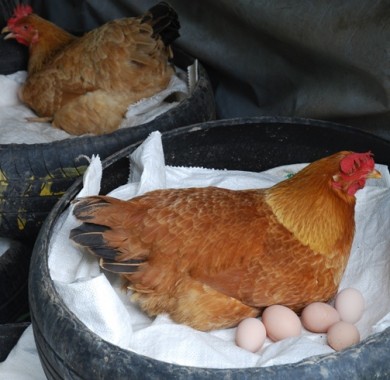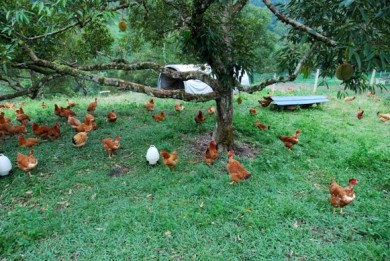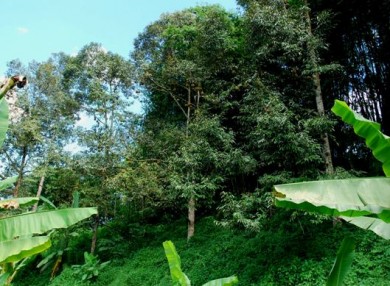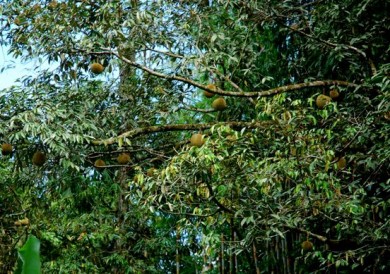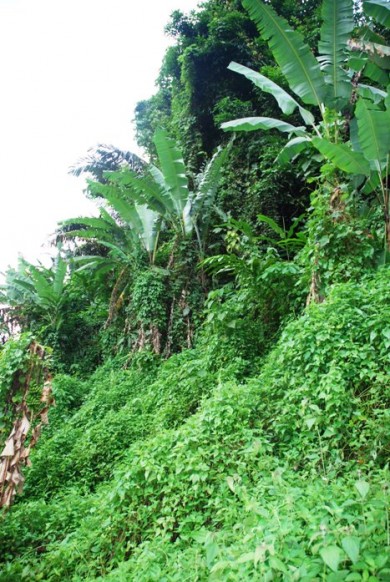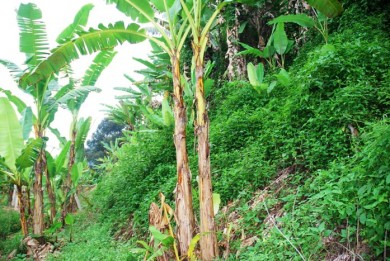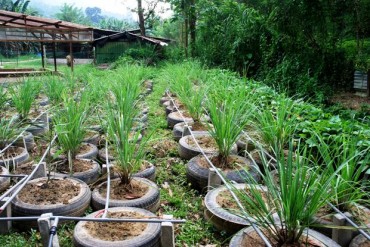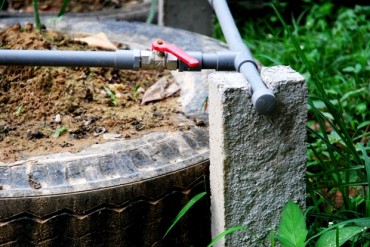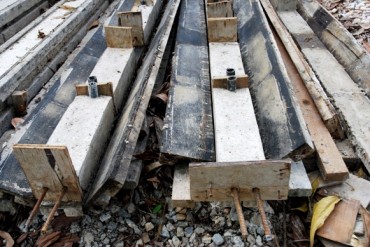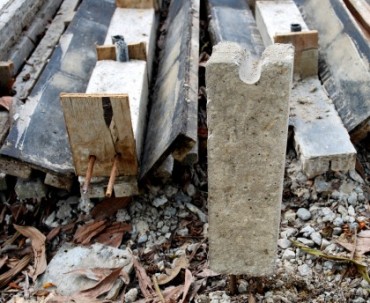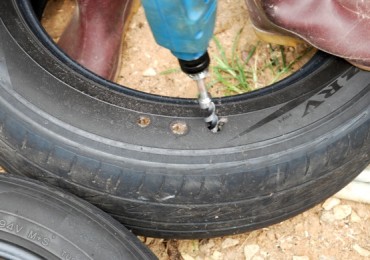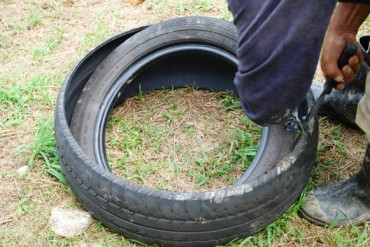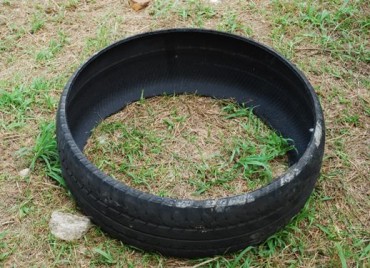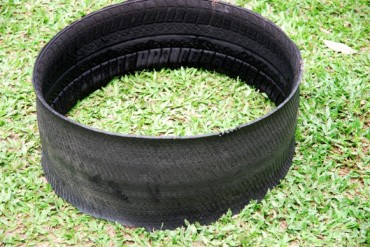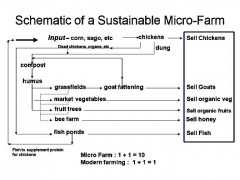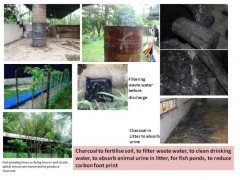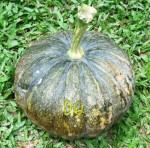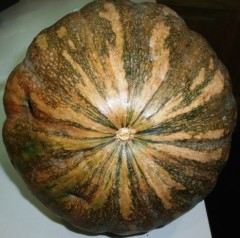Mar 09, 2012
Round Eyes, 'Long' Eyes
If you have a few thousand chickens running around, how do you know if some disease is starting?
In antibiotic-free poultry raising, it is extremely important that we catch problems fast. By the time the chicken shows obvious signs, the disease is well advanced and mortality can be high.
One of the fastest way we know of, especially if we are relying on workers, is to go like this first thing in the morning:
Farmer: How’s the chickens in Field Number 10?
Worker: OK, they are eating and running around.
Farmer: Are the eyes round?
Round Eyes
Worker: Most have round eyes. Some have 'long' eyes.
'Long' Eyes
Farmer: Out of 10 chickens, how many round, how many long?
Worker: 8 round, 2 long.
Round Eyes, 'Long' Eyes
20% of your chickens are showing signs of problems. You best head over to the field fast to see what’s the problem. First make sure the ‘long’ eyes is not due to physical eye problems.
Then, sacrifice a few chickens and examine the internal organs. Once you have narrowed down the possible causes, take the necessary action.
11:06 Posted in Chickens, Nature Farming, Sustainable Farming | Permalink | Comments (0) | Tags: free-range poultry, organic chicken farming, necropsy, poultry disease identification, chicken diseases
Mar 05, 2012
Flowering Enhancers - I
Some of the fruit trees shall be flowering soon. Time to make some flowering enhancers. Fermented flowering enhancers provide potassium and phosphorus, plus microbes to help the plants absorb the nutrients.
We use a large plastic container with a lid.

Add 10 kg of kangkung.
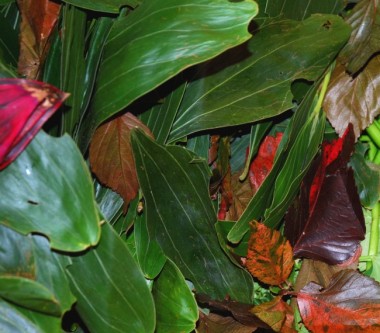
And 10 kg young acacia mangium leaves.
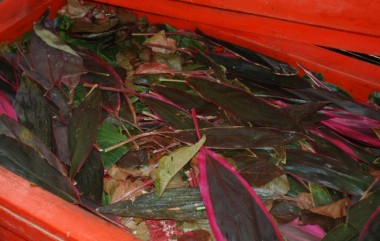
And 10 kg of red colored leaves.
Now add the potassium and phophorus:

25 kg of papaya and 25 kg of bananas.

Put them together, leaves at the bottom.

Add some molasses (agri grade, from Pertanian), about 20 kg will do.
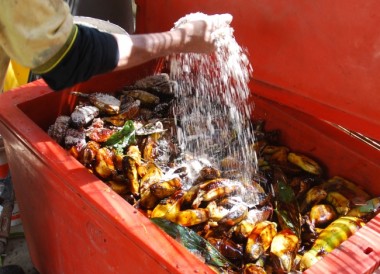
Sprinkle about 500gms quarry (granite) dust into the mix.
Cover with a plastic sheet, close the lid, and let ferment for 30 days.
(To be continued : Flowering Enhancers - II; How To Use)
14:03 Posted in Bio Nutrients, Sustainable Farming | Permalink | Comments (0) | Tags: bio nutrients, em, nature farming, sustainable farming
Nov 23, 2011
Free Range Layers I
We recycle used tires as nests for our layers.
Here's a double decker. It can also be a triple decker, both sides, like an 'A' frame.
Hens selecting their nests for the evening lay; they can be fussy. Our flock size is 150 hens.
Sometimes several hens just want that particular nest!
Last one to lay!
This particular flock have 200 sq ft of grass field per hen. That's chicken heaven!
09:55 Posted in Chickens, Sustainable Farming | Permalink | Comments (1) | Tags: free range layers, organic eggs, grassfed eggs, used tires, used tire nests, uses for used tires
Nov 19, 2011
Durians - Organically, Sustainably.
Durians are in season at our farm.
The trees are laden with fruits.
Branches need to be supported or else they will break from the load.
There's zero purchased inputs into our more than 800 trees.
We ferment discarded organs amd innards from our chicken operations to provide nitrogen for the trees.
We spray compost tea made from humus (from our compost) once a week to keep fungus and insects at bay.
That's it folks, plus of course integrated pest management without chemical pesticides. Resulting in the only certified organic durians in Malaysia.
10:34 Posted in Blog, Permaculture, Sustainable Farming | Permalink | Comments (1) | Tags: durians, organic durian, sustainable durian farm, organic durian farm
Oct 14, 2011
Slope Farming I
Land is getting scarce and sometimes we have to work on very steep slopes.
Accessibility and erosion then become major concerns.
Using used tires to make stairways is one way to create permanent, stable access with minimal erosion.
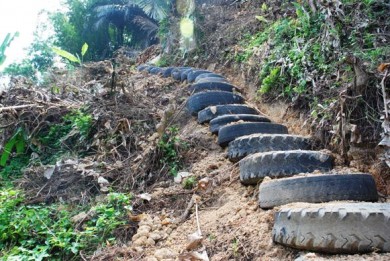
The top rim of the tire should be removed (using a full tang, heavy survival knife is best for this job). Earth used to fill the tires should then be compacted.
This stairway has been holding itself very well with no erosion or stability problems through two monsoon seasons now.
12:35 Posted in Permaculture, Sustainable Farming | Permalink | Comments (1) | Tags: uses for used tires, tire gardening, tire stairs, permaculture, sustainable agriculture
Jul 05, 2011
Tire Gardening
We are becoming quite an expert in tire gardening.
An old tire garden on soggy clayey soil producing sweet potatoes, and various herbs.
Tire gardens can be used on patches of land that otherwise will not be productive. Tire gardens tend to require less work for weeding and are suited for perennials. The initial hard work mixing the soil and then filling up the tires will pay off in the long run because you need invest less 'running costs' such as weeding, less leaching of nutrients and being a raised bed, less fungal and nematodes problems .
A new ginger garden coming up on a patch of land that has a lot of construction debris.
A serai / ginger / sweet potato garden in a corner with hard soil.
Proper piping reduces the time taken to water the plants. The pipes are raised on self-made concrete legs. We prefer PVC to poly pipes as we do not cement the sections of the pipes so we can dismantle and adjust or remove as needed.
Neat, sturdy, DIY.
It's easy to make the concrete legs:
Knock some used discarded construction plywood together to form moulds.
Newly stripped from the mould
The rebar sticks into the soil to prevent toppling.
Tires need drainage holes otherwise the roots will rot:
Use a half inch or larger, auger
Drill multiple holes on three sides of the tire
Make sure the holes are clean, otherwise the holes will close with moist soil.
PS
For home gardening, if you want a more aesthetic look, you can do as follows:
Remove the rim using a sharp knife
The tire after the top and bottom rims are removed. You can use it as it is (no necessity for drainage holes), or you may want to reverse it:
We intend to create potato stacks with these; maybe three tires high; the drainage would be better than uncut tires.
19:58 Posted in Blog, Sustainable Farming | Permalink | Comments (0) | Tags: tire gardening, making concrete posts, making drainage holes in tires, uses for old tires
Nov 02, 2009
Sustainable Farming - A Model
To be sustainable, inputs must be less than outputs. Inputs include fuel and all forms of energy, labour and raw materials. Even treatment of wastes must not consume excessive energy. For a farmer to practice sustainable agriculture, he must derive a reasonable income from his efforts.
This is a model for sustainable agriculture we developed at our farm (click to enlarge):
This how an acre of land may look like (click to enlarge):
We calculated a net income of RM3000 to RM5000 per month is possible from such a farm.
10:22 Posted in Sustainable Farming | Permalink | Comments (3) | Tags: sustainable farming, sustainable agriculture
Jul 27, 2009
Charcoal for Sustainability
We produce our own charcoal for multiple use at the farm: to bury carbon as part of the requirement for responsible animal husbandry, to use it to absorb urine and reduce ammonia in litter, to act as a filter in aquaculture, to clean waste water before discharging into rivers, to use as fertiliser for our fruits and vegetables, and to use as a more efficient source of fuel.
We plant fast growing trees such as acacia mangium and gliricidia septium as a renewal source of wood for charcoal production. The fast growing trees are planted where ever we have chickens, even right next to the coops or rebans.
In the fields, they not only convert CO2 to carbon, but also absorb nutrients from the chicken dung.
In this way, we try to reduce our carbon footprint, which should be a required part (and parcel) of the process of raising animals for food.
Click on the picture below for enlarged view:
09:45 Posted in Sustainable Farming | Permalink | Comments (1) | Tags: biochar, retort, sustainable farming
Jul 25, 2009
Grey Water Treatment; mini wetlands
13:23 Posted in Sustainable Farming | Permalink | Comments (4) | Tags: grey water, wetlands, permaculture water treatment
Jul 01, 2009
First Pumpkin
Harvested our first pumpkin today. It is actually a variety of Japanese squash, weighing in at 2kg. We saw one sold at Hock Choon for RM10.50 per kg.
Barely 6 hours after harvesting it, it is changing color nicely to a dark golden-brown.
Can't wait for the aging period to be over to taste it.
20:56 Posted in Sustainable Farming | Permalink | Comments (0) | Tags: kabocha, squash, japanese pumpkin, japanese kabocha, organic pumpkin, organic squash








